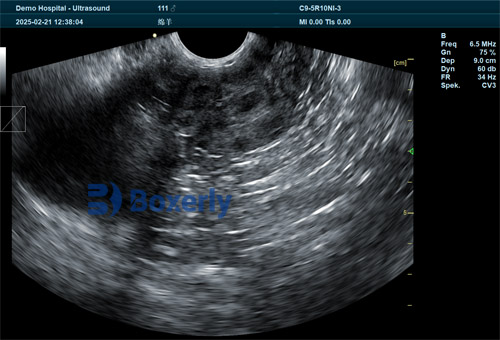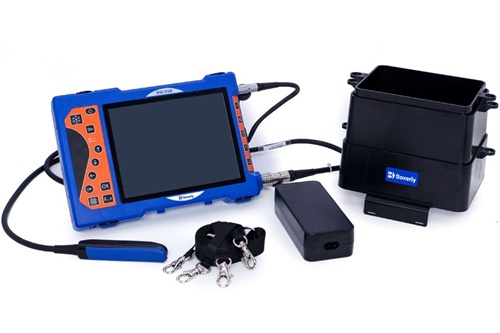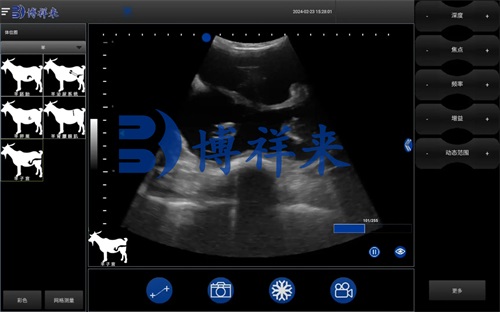As a sheep producer aiming to improve reproductive efficiency, timing and precision in breeding management have never been more critical. The introduction of advanced sheep ultrasound machines has transformed flock management practices, particularly in pregnancy detection, fetal development tracking, and reproductive health assessments. For many farmers across the globe, ultrasound technology has become an indispensable part of modern sheep farming—reducing guesswork and enhancing outcomes.

In this article, we’ll explore how advanced ultrasound machines are being used in sheep production, how foreign farmers view and apply this technology, and what benefits the adoption of these tools brings in terms of breeding accuracy, cost savings, and herd productivity.
The Role of Ultrasound in Sheep Breeding
Sheep reproduction is often seasonal and sensitive to external environmental and nutritional factors. Traditionally, farmers relied on behavioral signs or manual palpation to detect pregnancy or assess reproductive status. However, these methods are either unreliable or applicable only at later stages of gestation.
With the help of a modern sheep ultrasound machine, particularly portable B-mode devices, veterinarians and farmers can now obtain real-time visual insights into the ewe’s reproductive tract. This includes the presence of a corpus luteum, follicle development, early pregnancy diagnosis, fetal viability, number of fetuses, and any abnormal uterine content.
Foreign experts, particularly in countries like Australia, New Zealand, and the United Kingdom, have long emphasized the value of ultrasonography in boosting reproductive efficiency and reducing open days in ewes. For example, early pregnancy detection at around 25–30 days post-mating allows farmers to cull non-pregnant ewes, re-breed them, or manage them differently in terms of nutrition and labor allocation.
Benefits of Ultrasound for Sheep Farmers
1. Accurate Early Pregnancy Diagnosis
Modern ultrasound machines can detect pregnancies in ewes as early as 25 days after conception. This early identification is crucial for implementing strategic flock management—particularly in large herds where visual monitoring is inefficient and unreliable.
2. Determining Litter Size
One of the most useful capabilities of ultrasound is counting the number of fetuses in utero. This allows for tailored feeding programs: ewes with twins or triplets may require higher nutritional input, while those carrying singletons might be managed differently to avoid overfeeding.
3. Monitoring Fetal Viability and Development
Foreign studies have shown that ultrasound can help detect fetal heartbeat and movement, which indicates viability. Veterinarians in North America and Europe frequently use Doppler or B-mode scanning to confirm that a fetus is developing normally.
4. Managing Breeding Intervals
By identifying open ewes early, breeders can reduce the interval between breeding cycles. This leads to a higher annual lambing rate, improving overall profitability.
5. Detecting Uterine Abnormalities
Ultrasound imaging can reveal pyometra (uterine infection), cysts, and other anomalies that would otherwise go unnoticed. In the U.S., for instance, many sheep veterinarians rely on portable ultrasound devices during health inspections to detect subclinical reproductive issues.

Why Farmers Worldwide Are Embracing Ultrasound
Portability and Ease of Use
Devices such as the BXL-V50, a multi-species portable veterinary ultrasound scanner, have seen rising popularity among global sheep producers due to their compact size, waterproof design, and clear HD imaging. Farmers in the UK and Australia often highlight that such machines, which can operate continuously for over 7 hours, are ideal for use in remote or rugged environments.
Data-Driven Decisions
In countries like Canada and the Netherlands, where precision livestock farming is advancing rapidly, ultrasound imaging provides quantifiable data to support breeding decisions. This shifts the approach from reactive to proactive management, helping farmers avoid costly breeding errors.
Economic Impact
According to research published in Veterinary Clinics of North America, integrating ultrasound into routine sheep health programs leads to significantly higher lambing rates and more efficient use of feed and housing resources. One New Zealand farm cooperative reported a 20% increase in lamb crop after implementing routine ultrasound pregnancy checks.

Technical Considerations for Choosing an Ultrasound Machine
When selecting a sheep ultrasound machine, farmers should consider several factors:
Image Quality and Resolution
A machine with at least 256 levels of grayscale and an HD screen provides the clarity needed to differentiate between a fetus and other structures. Real-time feedback is essential for identifying heartbeat and fetal movement.
Probe Type
Linear rectal probes are ideal for transrectal scanning in early gestation, while convex probes offer wider viewing fields and are commonly used during mid to late pregnancy stages.
Battery Life and Ruggedness
Machines designed for farm use, such as the BXL-V50, often come with over 7 hours of battery life, waterproof casing (IP56), and durability features like dustproofing, essential for fieldwork.
Software Functionality
Some advanced machines support fetal biometry, allowing users to estimate gestational age based on fetal size measurements—a feature widely used in Germany and Denmark.
Global Perspectives: Adoption and Best Practices
In Australia, large-scale sheep stations utilize ultrasound primarily to segment flocks by litter size. This improves lamb survival and ensures tailored feeding, a practice endorsed by Meat & Livestock Australia (MLA).
In the United Kingdom, ultrasound scanning services are often offered by specialized technicians. Farmers book scanning days well in advance during lambing season. The emphasis is on accurate litter size determination, with many farms reporting lower lamb mortality as a direct result.
In the United States, a growing number of small- to medium-sized producers are adopting portable ultrasound units due to increasing awareness about reproductive efficiency. Extension services from universities such as Iowa State and Texas A&M often include ultrasound training in their small ruminant workshops.
In China, where flock sizes can vary widely, more sheep breeders are also starting to integrate veterinary imaging into breeding programs, especially in regions where genetic improvement and meat yield are national goals.

Practical Use Case: From Mating to Lambing
A typical reproductive calendar using ultrasound might look like this:
Day 0: Ewes are exposed to rams.
Day 25–30: First ultrasound check to confirm pregnancy.
Day 40–60: Second scan to determine fetal number and viability.
Late Gestation (90+ days): Final check for positioning and late-term health.
By following such a schedule, farmers can align their resources more effectively, provide supplemental feeding as needed, and improve both lamb survival and ewe health.
Limitations and Considerations
While ultrasound is a powerful tool, it's not foolproof. Operator experience plays a significant role in accuracy, particularly in early gestation scanning. Foreign literature often stresses the importance of training; for example, Scottish Agricultural College recommends that ultrasound users receive certification to maintain scanning standards.
Additionally, extremely obese or underweight ewes may present image quality challenges. The presence of gas in the digestive tract can also distort images. These limitations, however, are easily managed with proper technique and experience.
Conclusion: A Game-Changer in Sheep Reproductive Management
Advanced sheep ultrasound machines are revolutionizing how farmers approach breeding. From early pregnancy detection to accurate fetal counts and reproductive health diagnostics, ultrasound is enhancing the precision, profitability, and welfare standards in sheep farming across the world.
Whether you’re managing a small homestead or a commercial flock, adopting ultrasound technology—especially modern, field-ready equipment like the BXL-V50—can help reduce uncertainty, save costs, and increase productivity.
As more international producers embrace this technology, it’s clear that the sheep industry is moving toward more data-driven, animal-centric, and efficient practices. With the right tools and training, ultrasound empowers farmers to take greater control of their breeding programs and drive long-term success.

References
Meat & Livestock Australia. (2023). “Pregnancy Scanning for Sheep: Guidelines and Practices.”
https://www.mla.com.auVeterinary Clinics of North America: Food Animal Practice. (2020). “Use of Ultrasonography in Small Ruminants.”
https://www.sciencedirect.com/science/article/abs/pii/S0749072019301102Scottish Agricultural College. (2022). “Ultrasound Pregnancy Diagnosis in Ewes.”
https://www.sruc.ac.uk/scanningIowa State University Extension. (2023). “Small Ruminant Reproduction and Scanning Workshops.”
https://www.extension.iastate.edu/livestock/sheep
tags:


